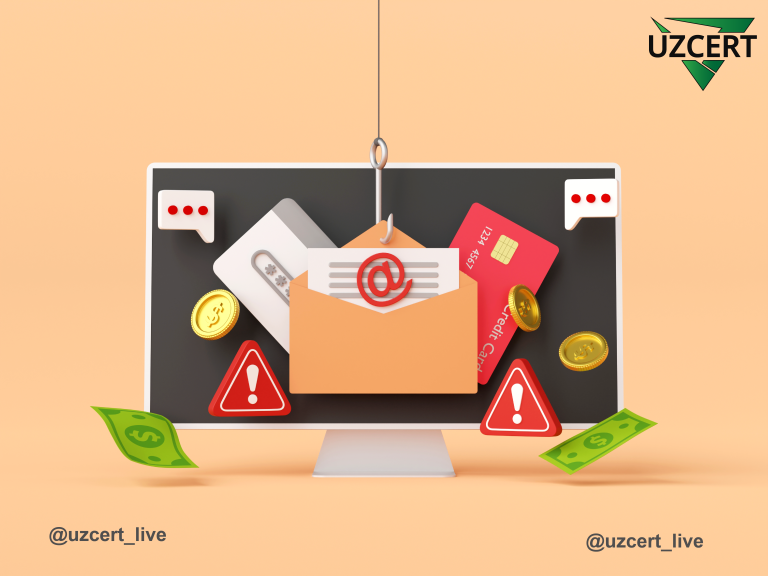
Top 15 Cybersecurity Vulnerabilities Identified in the “UZ” Domain and Their Consequences
In today’s digital era, the security of internet resources is more critical than ever. According to research conducted by the UZCERT service in 2024, numerous high-risk cybersecurity vulnerabilities have been identified in web resources hosted in the “UZ” domain. Below, we provide detailed information on their main types, the potential risks they pose, and the precautionary measures that can be taken.
1. Identification and Authentication Failures – Found on 80 Websites
These vulnerabilities allow attackers to gain unauthorized access to users’ personal data. Weak authentication systems can result in password theft or unauthorized access to the system, significantly increasing the risk of data breaches and compromise.
2. Vulnerable and Outdated Components – Found on 89 Websites
Using outdated software or plugins creates security loopholes. Attackers can exploit these vulnerabilities to infiltrate the system, install malicious software, or steal sensitive data.
3. Security Misconfigurations – Found on 56 Websites
Incorrect security settings make the system vulnerable to attacks. This can allow attackers to modify access rights or manipulate data.
4. Insecure Design – Found on 12 Websites
Errors in the design phase of software or system architecture create opportunities for cyberattacks, potentially leading to data loss or unauthorized access.
5. Broken Access Control – Found on 54 Websites
If access control is misconfigured, users may receive more privileges than they should have. This increases the risk of exposure or alteration of confidential documents.
6. Injection Attacks – Found on 27 Websites
SQL injections and other types of code injection attacks allow hackers to gain unauthorized access to databases, delete data, or modify critical information.
7. Improper Restriction of Excessive Authentication Attempts – Found on 27 Websites
If a system allows unlimited login attempts, it becomes vulnerable to brute-force attacks, potentially leading to stolen passwords and unauthorized system access.
8. Cryptographic Failures – Found on 12 Websites
Improper encryption implementation leaves data unprotected. Attackers can exploit these weaknesses to decrypt and misuse sensitive information.
9. Exposure of Sensitive Information to Unauthorized Actors – Found on 15 Websites
If a system stores users’ personal or financial data in an unsecured manner, it may lead to fraud and identity theft.
10. Leakage of Passwords – Found on 13 Websites
If passwords are stored unprotected or improperly encrypted, they can be exposed online. As a result, users may lose access to their accounts.
11. Software and Data Integrity Failures – Found on 15 Websites
Attackers may inject malicious code or tamper with software, posing significant threats to applications and users.
12. Directory Listing Vulnerability – Found on 5 Websites
If a web server is misconfigured, internal site files may be exposed to the public. This allows attackers to access confidential documents.
13. Clickjacking – Found on 3 Websites
In clickjacking attacks, attackers trick users into clicking hidden buttons or links, which can lead to the execution of malicious scripts or the theft of sensitive information.
14. Use of Outdated TLS Versions (OWASP: Weak SSL/TLS Ciphers) – Found on 2 Websites
Using outdated or weak encryption algorithms in TLS reduces data security and makes it easier for attackers to decrypt information.
15. Common Weakness Enumeration (CWE) – Found on 20 Websites
This category includes various vulnerabilities related to insecure coding practices and other security flaws that make systems susceptible to cyberattacks.
The vulnerabilities identified by UZCERT highlight the current state of cybersecurity and warn of the serious consequences these issues can cause. Eliminating these vulnerabilities is a crucial step in securing information systems. Every organization should conduct regular security assessments, address vulnerabilities, and enhance protection against cyber threats. Only by taking these measures can data security be ensured and cyber risks mitigated.



